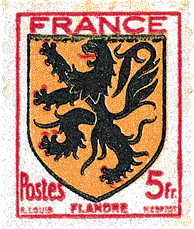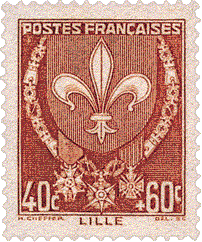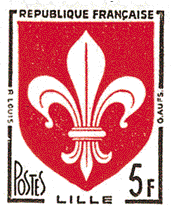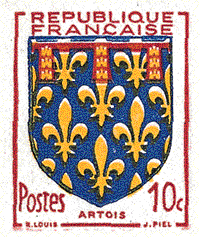 |
After the treaty of Verdun in 843 that give a part of the Flanders to Charles le Chauve, he entrusts a warrior named Baudoin-Bras-de-Fer with the area to improve the defence against the Norman. Baudoin-Bras-de-Fer has found the first house of the count of the Flanders in 843 and the arms with the lion appear in this area. Lion is the most representative animal in heraldic art because it represents strength and majesty. The actual lion of Flanders, sable above a golden background would be the one of Jeanne of Flanders's escutcheon. Jeanne of Flanders was a good countess and has governed Lille from 1213 to 1244 when her husband was taken prisoner during the battle of Bouvines. This escutcheon looks better. |


